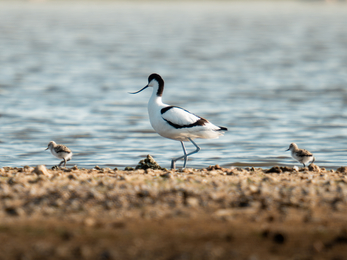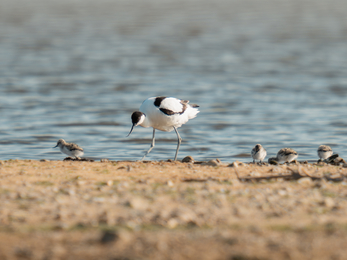Extinct in the UK during the 19th Century, avocets returned to British shores during the Second World War, when parts of East Anglia’s coastline were closed to the public and flooded as a military defence, giving them the protection they needed to re-establish. Once confined to the east coast, this species has made a remarkable comeback, as they have now spread westward and can be seen nesting on the south coast, including at Lymington and Keyhaven Marshes Nature Reserve.
About the size of an oystercatcher but far more slender, the avocet or 'pied avocets' as they are known globally, is a master of the shallow lagoons and mudflats where it feeds. It sweeps its unique bill side to side through the water to find aquatic insects, worms, and tiny crustaceans - an elegant feeding technique that’s fascinating to watch.
Avocets are stunning in appearance. Their crisp white feathers are broken only by bold black markings across the wings and back, and a black cap that sweeps from the top of the head down the back of the neck. In flight, their striking colour pattern becomes even more visible, with contrasting wing bars and long legs trailing behind. Their high-pitched, musical calls add to their charm and make them a favourite among birdwatchers.



